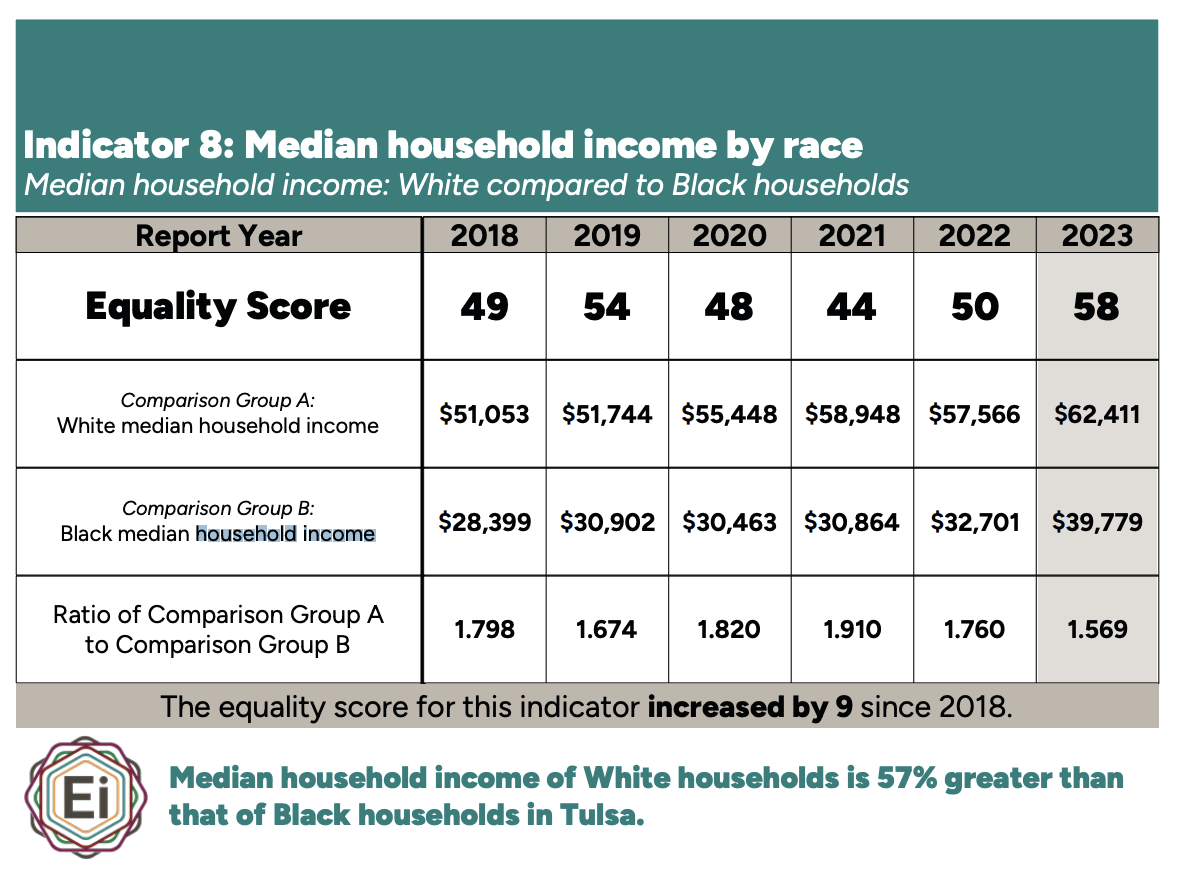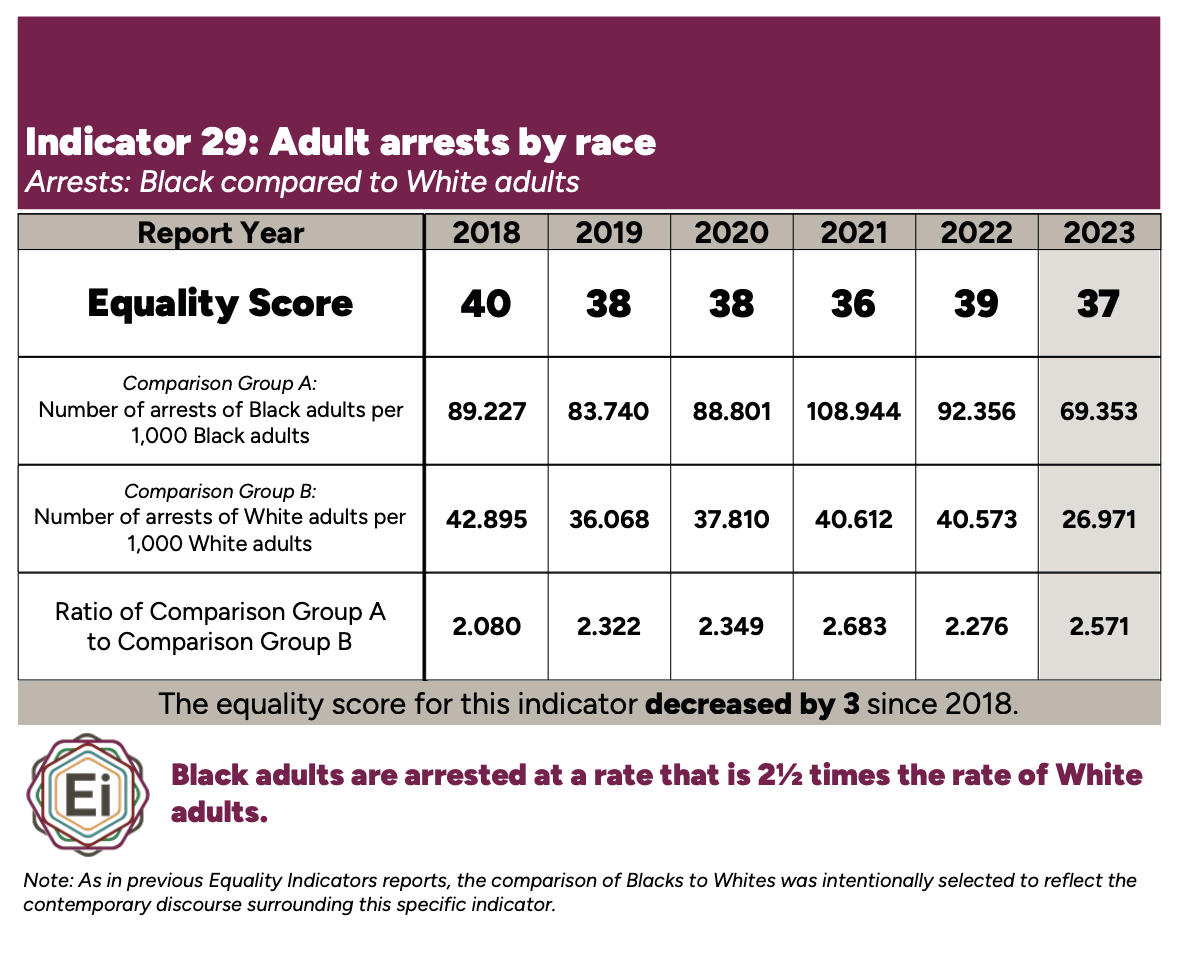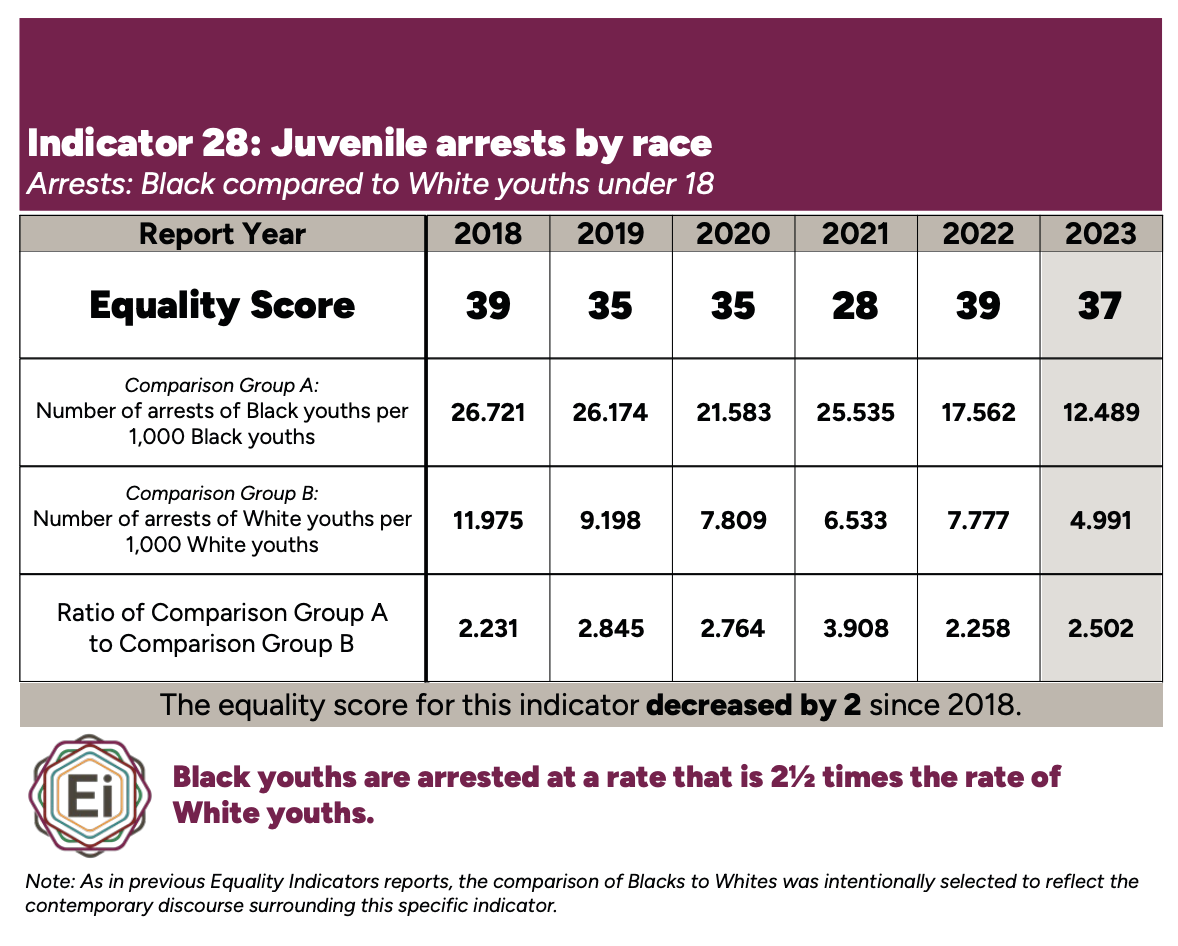
COMMUNITY
John Neal
Illustration, Adobe Images and The Oklahoma Eagle
The Equality Indicators report was first used by Tulsa in 2018 to measure and close inequity gaps that thwart economic growth and social justice. The report focuses heavily on ethno-racial and geographic disparities but includes gender, educational attainment, veterans, disabilities, and many other factors that play a role in the city’s equality assessment.
While the overall score for Tulsa reflected some modest improvement from 2018, the 2023 score of 42.37 is still below the midpoint on the equality index range of 1 to 100. On that scale, 100 represents equalities among all populations. Equally discouraging, the Justice and Service themes indicators declined over the last six years. The Mayor’s Office of Resilience and Equity (MORE), under G.T. Bynum, released a statement noting, “This scoring suggests Tulsa may be improving in regard to equality on some of the 54 indicators.”
Tulsa Mayor GT Bynum – The Equality Indicator’s report as a tool for assessing, and eventually improving conditions for Black Tulsans.
According to the arc of the reports issued over the past six years, however, the Bynum Administration has brought about little to no positive impact for Black Tulsans during his tenure. Bynum has served as Tulsa Mayor since 2016 and will be leaving office this year.
A closer analysis of the Equality Indicators report by The Oklahoma Eagle reveals information that may be incomplete or misleading, in a city deeply divided in equality, particularly between races and city communities. Readers can access the full report here: www.tulsaei.org
Black and White
The theme of Economic Opportunity is the first and most direct measure of the stark differences between specific racial and ethnic communities Tulsa. Black household annual income has ticked upward over the past few years, but at roughly $40,000, it is still less than two-thirds the income of white households. They earn $22,600 more on average. Half of Tulsa’s Black households earn less than $40,000 annually, plunging most of these into poverty or near poverty conditions that require state or federal financial program assistance.

Less access to a motor vehicle, lower-paying jobs and other inequalities contributed to the racial income disparity. Additionally, Black employment rates fell compared to Whites over the six years. Black Tulsans were unemployed at almost three times the rate of their White counterparts in 2023. Whites outnumbered Blacks in business ownership rates at the other end of the financial opportunity spectrum. Consequently, home ownership for Black households also substantially lagged behind Whites, with only one-third of Tulsa Black-Americans residing in a home being purchased or owned in 2023.
The theme of “Justice” had the lowest score of all six themes in the 2023 report. The Justice theme score fell sharply from the baseline score in 2018. “This theme explores disparities in arrests, law enforcement workforce, officer use of force, and violence,” the report said.


Among the most serious of the criminal justice disparities are much higher arrest rates of Black Tulsans compared to Whites. For Black Americans in Tulsa – youth and adults alike- arrest rates were more than 2.5 times that of Whites. During this same period, homicide victimization rates grew faster for Blacks than Whites, reaching five times the likelihood of being murdered in Tulsa if you are Black.
Separate and Unequal
The purpose of the Equality Indicators report is “to measure the extent of disparity over time between the most advantaged and most disadvantaged population groups.” Sometimes the advantages or disadvantages measured is a matter of where Tulsans live. The report strikingly reveals that among the five geographic regions identified within Tulsa, the most significant disparities in equality- resources, services, and consequences- is between North and South Tulsa.
The report also cites the new Neighborhood Conditions Index (NCI) study prepared by the City Planning Department in 2023. The NCI report provided granular community detail and was used by the Eagle in constructing a profile of the greater Greenwood residential area, hereafter “Greenwood,” within North Tulsa.
The Equality Indicators (EI) report found that wages are much lower in North Tulsa compared to the south. It would have noted an even greater income disparity if it had taken a deeper dive into its NCI report. The median household income for Greenwood is approximately $34,000, or $15,000 less than the city-wide average. The same holds for most comparisons of North to South Tulsa, namely within the Greenwood area of North Tulsa equality disparities are even more significant than those in the south part of the city.
While the EI report finds that North Tulsa has twice the vacant housing units than the south, the Greenwood analysis done by the Eagle using NCI data found a more extensive housing problem. Among the findings were renters and homeowners becoming “cost-burdened,” spending 30% or more of their household income on housing costs. Collectively, the Greenwood area fell in the city’s bottom 25% (worse off) in the “Housing and Neighborhood” NCI data for all of Tulsa. This disparity adds financial pressure and food scarcity problems on low-income families, while much of North Tulas remains a “food desert”.
The EI report documents extensively some of the consequences of these inequity shortfalls between North and South Tulsa, and Black and White Tulsans. They include greater cardiovascular disease, higher infant mortality rates, and shorter life expectancies. These spawn twice the ratio of emergency room visits in North Tulsa, where health care is sparse and becoming scarcer.
Eagle Analysis
How is it that given the continued racial disparity for Black Tulsans, particularly in North Tulsa, the overall Equality Indicators score for Tulsa “improved”? To understand this phenomenon, The Oklahoma Eagle staff took a deep dive into the data to examine the increase in the EI score for the Education Theme. The “Student Achievement Topic” within the Education Theme fell, primarily reflecting learning loss due to the pandemic. However, education scores overall showed the greatest improvement of any theme, with an increase of 12 points. Without that increase, the overall Tulsa Equality Indicator score would have fallen below scores for the last three years.
Growth in three indicators buoyed the Education Theme score. However, a close look at the “improved” scores reflects no improvement for the “disadvantaged” but rather a deterioration of scores among the historically “advantaged” group. The EI report for Tulsa Public Schools (TPS) education indicators provides the following information, comparing 2018 to 2023:
1. Chronic absenteeism by race score “improved” by 58 points.
Discussion: Chronic absenteeism following the pandemic skyrocketed for all races to 45% or more. However, because it affected Asian TPS students (advantaged) proportionally more than Native Americans (disadvantaged) in this indicator, the score reflects meaningless “improvement.”
2. Dropping out of school by income level score “improved” by 41 points.
Discussion: In 2018, low-income TPS 12th-grade students dropped out of school 2.5 times more than high-income students. In 2023, high-income student dropout rates rose to a rate comparable to low-income students, while the low-income student rate remained essentially unchanged. Thus, the “improved” relative score.
3. Emergency teacher certification by geography “improved” by 19 points.
Discussion: Emergency certifications are temporarily granted to teachers who do not meet the standard teaching certification requirements. This indicator measurement compares the number of TPS emergency certifications per 1,000 students with other school districts in Tulsa County. While the absolute number of emergency certifications per student grew dramatically for all school districts in the county, the growth rate was higher among non-TPS districts. Nevertheless, while more than tripling its reliance on teachers with emergency certifications over the same period,
TPS was awarded an “improved” score.
Without these three score indicators “improvements” in the Education category, the 2023 Equality Indicators score for the Education Theme would be below the 2018 rating. The Eagle found a similar flaw in some of the 2023 non-education indicators- where the disadvantaged did not perform better over time, but the score “improved.”
The Oklahoma Eagle analysis demonstrates most, if not all, of the purported improvement in the Tulsa Equality Indicators score for 2023 compared to the first report of 2018 is due to statistic quirks in the way scores are calculated. Abundant data in the report reflect inequality and injustice have continued unabated over the last six years for Tulsa. This is poignantly true for North Tulsans and Black Americans.
Trusting News campaign members are encouraged to complete the following survey.










